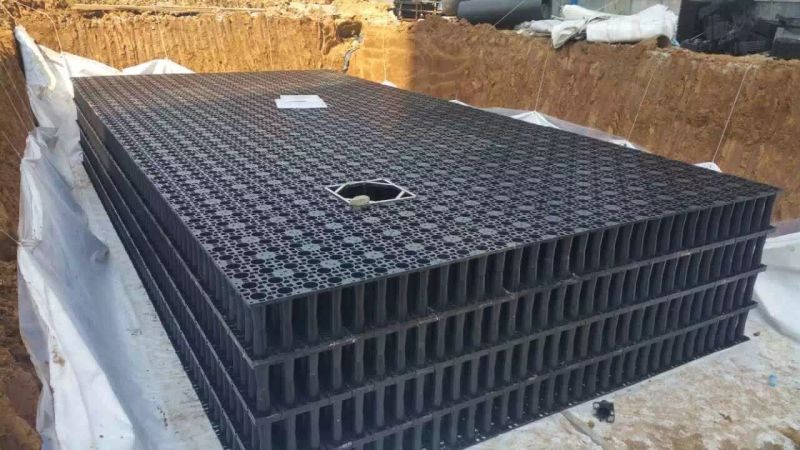News
- Home
- News

- Mar 25,2023
- 超级管理员
- 465 VISITS
How do rainwater harvesting systems work?
Taizhou Huangyan Zhaocheng Molding Co., Ltd. installs the rainwater collection system steps are summarized as follows:
1. Excavate the earthwork, implement the earthwork stacking or external transportation plan, do a good job of grading and foundation pit support during the excavation process, and the operators of mechanical equipment must hold certificates to work;
2. Pouring the cushion, according to the soil conditions, determine the thickness and ratio of pouring concrete for installing the rainwater module cushion, and do a good job in the pouring and maintenance of the foundation cushion;
3. Flat laying of geotextiles and geomembranes;
4. Install the rainwater module and install it in strict accordance with the process requirements to avoid safety accidents caused by module collapse.
The rainwater harvesting system utilizes fish ponds, low-lying areas, landscaped water bodies or man-made storage pools in the land area to store, adjust the peak rainwater flow rate, thereby reducing floods, reducing the construction cost of middle and lower rainwater pipelines, and achieving the purpose of saving project budget , wait for the peak to pass and then slowly arrange. The key elements for the rainwater harvesting system to be able to collect and utilize rainwater in residential areas are: 1. Climatic materials, including precipitation, annual rainfall, and design return period. Heavy rain compressive strength, etc.; 2. Detailed location information, including the degree of infiltration of the soil layer, natural water body conditions, etc.; 3. Overall planning content, including the scale of the residential area, the level of landscaping, the slope of the road, whether there are landscape water bodies, etc. ;4. Utilization regulations, including water quotas for landscaping, fire safety, road cleaning, etc., tap water time, etc.
The different rainwater collection steps of the rainwater harvesting system are purposeful, and the rainwater harvesting system can effectively deal with the rainwater of different river surfaces. It can not only collect rainwater reasonably, but also effectively save costs. It also has systematic rainwater preparation treatment, rainwater storage, rainwater deep cleaning, rainwater power supply, water replenishment and system operation. The rainwater harvesting system uses a large number of new professional equipment and materials, which can easily solve the unique problems in rainwater harvesting, such as waste water, water storage, power supply, etc. In the collection design scheme, avoid the application of electrical equipment as much as possible, and make full use of the characteristics of automatic outflow of rainwater to carry out automatic sewage discharge, cleaning and collection of air pollutants, so as to ensure the characteristics of real environmental protection, energy saving, environmental protection, long service life and cost reduction. The whole system is controlled by the rainwater control panel to perform collection, cleaning, power supply, water replenishment, safety protection and other functions.
